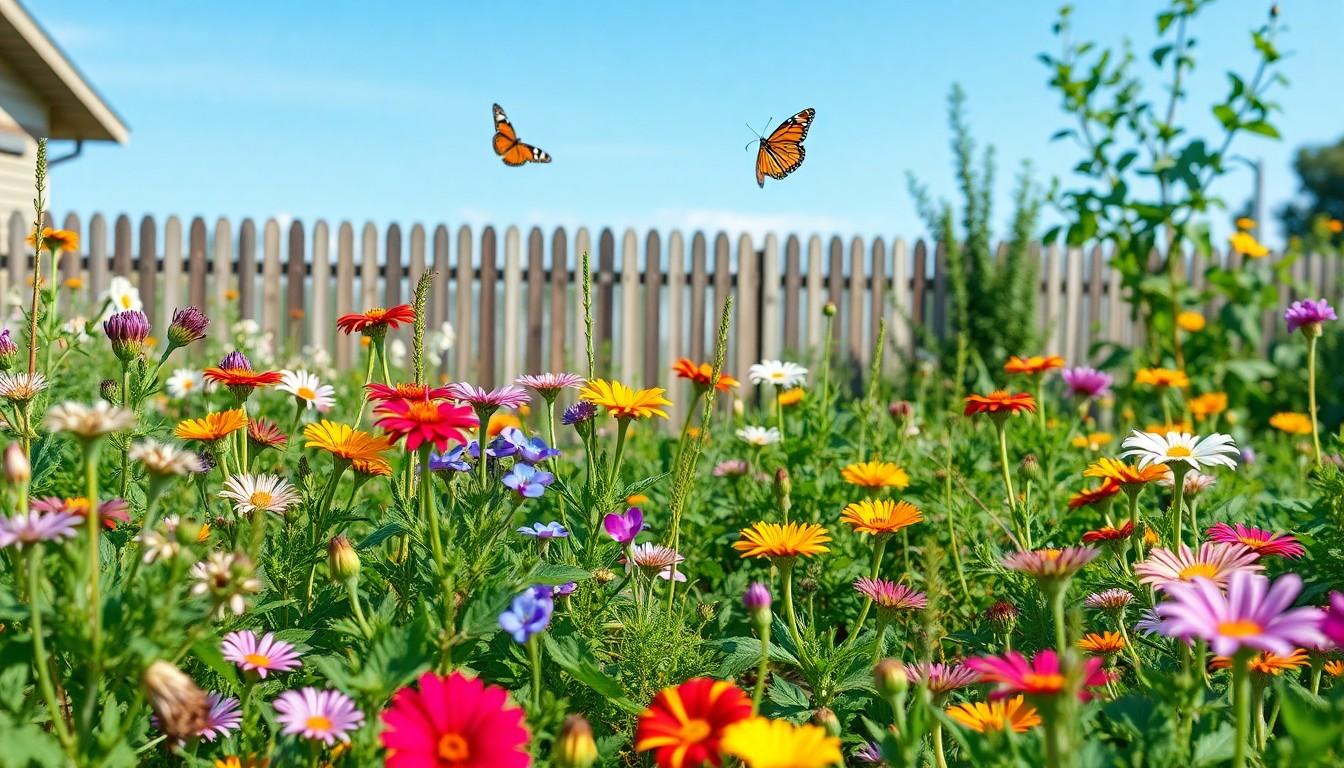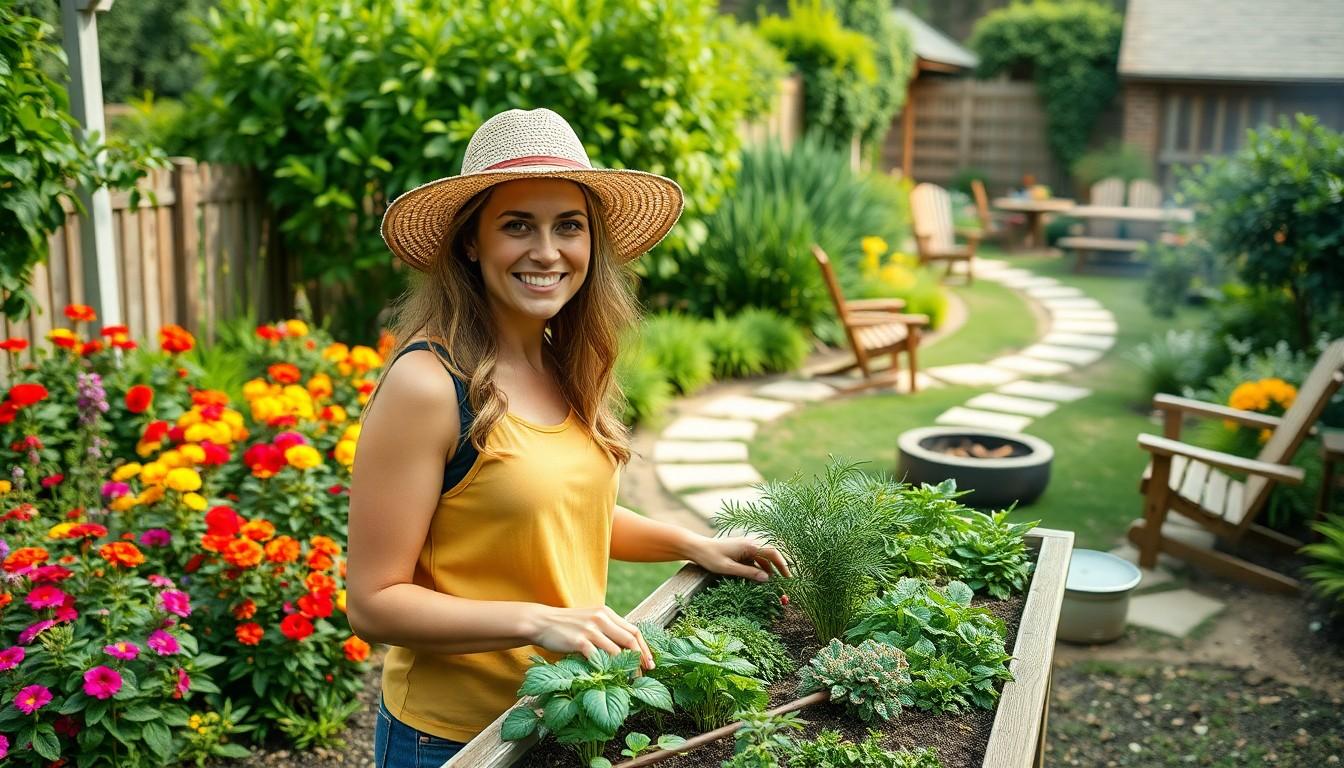Transforming a homestead into a flourishing oasis isn’t just about growing veggies and raising chickens; it’s about creating a space that reflects personality and purpose. Imagine stepping out your door to a vibrant landscape that not only feeds the soul but also tickles the senses. With the right landscaping, a homestead can become a sanctuary where nature and creativity dance in harmony.
Overview of Homestead Landscaping
Homestead landscaping encompasses a variety of elements that enhance both functionality and aesthetics. This practice integrates gardens, pathways, and outdoor living spaces, all tailored to individual needs and preferences. Sustainable landscaping techniques play a crucial role, utilizing native plants and permaculture principles to maintain biodiversity and reduce resource consumption.
Incorporating edible landscaping maximizes utility while maintaining beauty. Fruit trees, berry bushes, and herb gardens provide fresh produce while attracting beneficial wildlife. Water features, such as ponds or rain gardens, promote ecosystem diversity, offering habitats for various species.
Design concepts involve creating zones within the landscape that cater to specific activities. Relaxation areas, vegetable patches, and play zones should blend seamlessly while maintaining a cohesive look. Hardscaping elements like patios, walkways, and fences contribute structure and functionality to the overall design.
Maintaining a homestead landscape requires thoughtful planning. Regular maintenance routines, such as pruning, mulching, and irrigation, ensure the longevity of plants and features. Seasonal adjustments, including planting specific greenery, can enhance beauty year-round.
Visibility and accessibility matter significantly in homestead landscaping. Well-placed paths ensure easy navigation, while strategically oriented seating provides scenic views. Color schemes and textures should align with personal aesthetic choices, creating an inviting atmosphere.
Efficient homestead landscaping promotes not only the beauty of the space but also the well-being of its inhabitants. A well-designed landscape fosters a sense of connection to nature, supporting relaxation and rejuvenation. This approach transforms the homestead into a vibrant retreat, defined by creativity and harmony.
Benefits of Homestead Landscaping

Homestead landscaping offers a variety of advantages that enhance both the property’s value and the overall quality of life for its inhabitants. These benefits include environmental improvement and economic savings.
Environmental Advantages
Environmental sustainability thrives through homestead landscaping practices. Native plants, often more resilient, reduce the need for excessive watering and chemical treatments. Wildlife habitat increases, promoting biodiversity and fostering healthier ecosystems. Organic practices improve soil health and water retention, further enhancing the landscape’s resilience. Pollinator gardens support bees and butterflies, creating a vibrant, productive environment. Additionally, landscaping reduces erosion and improves air quality by filtering pollutants. These elements contribute significantly to a balanced ecosystem, ultimately benefiting the entire homestead.
Economic Benefits
Homestead landscaping can lead to significant economic advantages. Increased property value often results from well-designed outdoor spaces, appealing to potential buyers. Edible gardens yield fresh produce, reducing grocery costs and promoting self-sufficiency. Energy efficiency improves with strategically placed trees providing shade, leading to lower heating and cooling bills. Additionally, regional plants may require less upkeep, minimizing maintenance expenses. Investing in homestead landscaping translates to long-term savings and increased financial stability, making it a wise choice for homeowners.
Essential Elements of Homestead Landscaping
Essential elements play a crucial role in creating a functional and appealing homestead landscape. These components include plant selection, hardscaping features, and effective water management techniques.
Plant Selection
Choosing the right plants makes a significant impact on the overall design. Native plants thrive in local conditions, requiring less water and maintenance. Incorporating edible plants, like fruit trees and vegetables, enhances both beauty and productivity. Colorful perennials attract pollinators while providing year-round interest. Selecting plants that bloom in different seasons ensures continuous visual appeal and supports local wildlife. Overall, a diverse plant selection fosters a thriving ecosystem that benefits both the landscape and the gardener.
Hardscaping Features
Integrating hardscaping elements adds structure and functionality to the landscape. Patios offer a designated space for outdoor activities, while pathways guide visitors through the property. Using durable materials, such as stone and gravel, creates visually striking features that complement the natural surroundings. Retaining walls can prevent soil erosion and define garden borders. Incorporating seating areas allows for relaxation and enjoyment of the landscape. Thoughtfully designed hardscaping unifies the outdoor space, providing both aesthetic charm and practical benefits.
Water Management
Implementing effective water management strategies is essential for a sustainable landscape. Rain gardens capture and filter stormwater, promoting groundwater recharge. Utilizing drip irrigation systems conserves water while delivering it directly to plant roots. Collecting rainwater in barrels supports efficient watering methods. Mulching around plants retains moisture and suppresses weeds, reducing the need for additional watering. Efficient water management ensures healthy plants, leading to a self-sustaining homestead that conserves resources and promotes environmental health.
Design Tips for Successful Homestead Landscaping
Designing a homestead landscape involves thoughtful planning to enhance both beauty and function. Focusing on specific elements can create an inviting and productive outdoor space.
Incorporating Native Plants
Integrating native plants into the landscape emphasizes sustainability and supports local ecosystems. Native species often require less maintenance and adapt easily to local conditions. These plants attract beneficial wildlife while ensuring vibrant colors throughout the seasons. For example, coreopsis and coneflower provide visual interest and support pollinators like bees and butterflies. Prioritizing biodiversity through the inclusion of various native plants enriches the landscape while promoting resilience against pests and diseases. Utilizing native plants fosters a harmonious connection to the environment, making the landscape sustainable and visually appealing.
Creating Functional Spaces
Establishing functional spaces converts the homestead into a versatile retreat. Incorporating areas for gardening, relaxation, and entertaining maximizes utility. Designing raised beds for vegetables simplifies maintenance and improves accessibility. Comfortable seating areas, positioned for scenic views, invite relaxation and social gatherings. Creating pathways that connect different zones enhances accessibility while guiding visitors through the landscape. Incorporating features such as fire pits or outdoor kitchens boosts the outdoor experience and encourages gatherings. Balancing aesthetics with functionality ensures each space serves a purpose, improving the overall experience in the homestead.
Maintenance Strategies for Homestead Landscaping
Maintaining a homestead landscape requires consistent effort and adaptive strategies to keep the environment thriving and beautiful.
Regular Care Practices
Implementing regular care practices ensures plants remain healthy and landscapes are visually appealing. Regular watering promotes root growth and resilience, especially for new plants. Pruning is crucial for enhancing airflow and preventing disease among foliage. Mulching around plants helps conserve moisture while suppressing weeds. Observing pest activity allows for timely intervention, using integrated pest management techniques to minimize chemical use. Fertilizing with organic options supports soil health while providing essential nutrients. Checking and maintaining hardscaping features, such as paths and patios, prevents deterioration and enhances accessibility.
Seasonal Maintenance Tasks
Conducting seasonal maintenance tasks prepares the landscape for changing weather. Spring involves cleaning garden beds, removing debris, and applying mulch to rejuvenate growth. Summer calls for regular weeding and consistent irrigation, especially during heat waves. In the fall, planting cover crops improves soil quality while preparing for winter. Performing structural checks on paths, fences, and raised beds prevents damage from seasonal elements. Winter maintenance includes protecting vulnerable plants with frost cloths and planning for soil amendments. Engaging in these tasks promotes sustained beauty and harmony across the homestead landscape throughout the year.
Conclusion
Transforming a homestead through landscaping offers a unique opportunity to create a personal sanctuary that nurtures both the environment and its inhabitants. By integrating sustainable practices and thoughtful design, individuals can cultivate spaces that are not only beautiful but also functional.
The blend of native plants and edible gardens enhances biodiversity while providing essential resources. Regular maintenance ensures that these landscapes thrive across seasons, fostering a connection to nature that enriches daily life.
Ultimately, investing in homestead landscaping is a commitment to sustainability and well-being, resulting in a vibrant retreat that reflects individual creativity and harmony with the environment.




